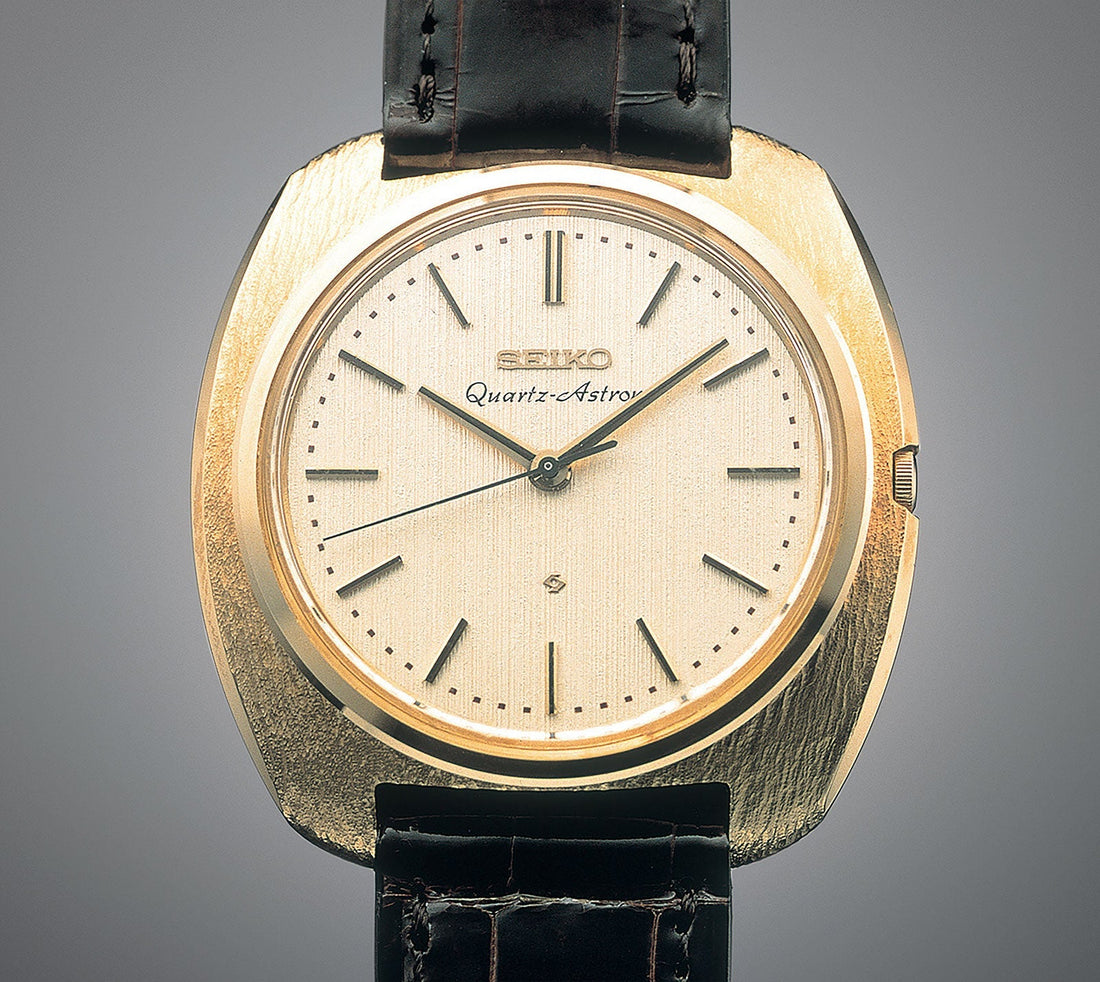
The Quartz Crisis: How a Simple Watch Changed Timekeeping Forever
Share
The Quartz Crisis: How a Simple Watch Changed Timekeeping Forever
In the fascinating world of watches, few events have made waves like the Quartz Crisis. This term refers to the dramatic shift from traditional mechanical watches to battery-powered quartz timepieces in the 1970s and 1980s. This change not only reshaped the watch industry but also transformed how we think about time itself. Let’s dive into the story behind this revolution, its effects on watchmaking, and why it still matters today!
The Birth of the Quartz Revolution
The Quartz Crisis officially kicked off in 1969 with the launch of the Seiko Astron—the world's first commercially successful quartz watch. This groundbreaking timepiece featured a tiny quartz crystal that vibrated at a precise frequency when electric current flowed through it. This meant it could keep time with incredible accuracy, far surpassing traditional mechanical watches. The Seiko Astron showcased Japan's innovative spirit and set the stage for a new era in timekeeping.
As word spread, many other companies jumped in. Brands like Casio, Citizen, and Swatch made affordable quartz watches that took the market by storm. These watches were not only more precise but also cheaper and easier to maintain than mechanical models. Consumers quickly realized the benefits, leading to a swift shift in buying habits.
The Shock to Swiss Watchmakers
While the quartz watch craze blossomed, it sent shockwaves through the Swiss watch industry, known for its exquisite craftsmanship. Renowned brands like Rolex, Omega, and Patek Philippe found themselves in a difficult position. With the influx of affordable quartz options, luxury watches struggled to attract buyers.
At first, many Swiss manufacturers scoffed at the idea that quartz could replace their beloved mechanical watches. They believed consumers would always value the traditional art of watchmaking. But the reality hit hard. By the late 1970s, over 1,500 Swiss watchmakers faced bankruptcy as sales plummeted.
A Comeback for the Swiss
Rather than surrendering to the quartz tide, the Swiss watch industry decided to adapt and innovate. In 1983, the birth of the Swatch brand marked a pivotal change, offering stylish, affordable watches that still met Swiss quality standards. The Swatch's popularity helped revive the industry.
Swiss brands also embraced the luxury market by promoting mechanical watches as exclusive, high-quality products. This shift allowed them to thrive alongside quartz watches. Some even created hybrid models that combined quartz accuracy with mechanical artistry—bringing the best of both worlds to consumers.
The Lasting Impact of the Quartz Crisis
The Quartz Crisis was more than just a challenge; it sparked a wave of innovation that reshaped the watch industry. It laid the groundwork for advances in quartz technology, leading to digital displays, solar-powered watches, and even smartwatches. Today, watch enthusiasts can choose from a vibrant mix of options, from classic mechanical timepieces to ultra-modern gadgets.
The Quartz Crisis also teaches a valuable lesson about adaptability in the face of disruption—a lesson for all industries. It emphasizes the importance of embracing change, fostering innovation, and carving out a unique space in a competitive market.
Conclusion
The Quartz Crisis was a defining chapter in watchmaking history, setting the stage for a diverse world of timepieces we enjoy today. It challenged industry stalwarts, reshaped consumer preferences, and highlighted the importance of innovation. As we wear our watches—whether quartz, mechanical, or smart—we celebrate a legacy that continues to tick forward, reminding us that time, like the watch industry, is always evolving.
